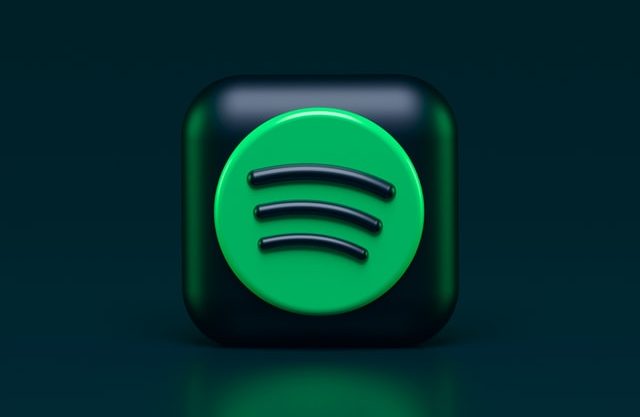Spotify Business Model: Spotify, launched on April 23, 2006, in Sweden by Daniel Ek and Martin Lorentzon, was created to address the rampant issue of music piracy, exemplifying the innovative Spotify Business Model. The name “Spotify” is derived from a combination of “spot” and “identify.” Initially, Spotify began its journey on October 7, 2008, with an invite-only system in select European regions. By February 2009, it had expanded to public sign-ups in the UK. However, the surge in demand following the release of its mobile app led to a temporary halt in new registrations.
| Origin Country | Stockholm, Sweden |
| Established year | 2006 |
| CEO | Daniel Ek |
| Headquarters | Stockholm, Sweden |
| Founder | Daniel Ek |
| Brand Ambassador | Deepika Padukone |
| Products | Over 100 million tracks, 5 million podcasts titles, and 350,000 audiobooks |
| Number Of employees | 9,000+ |
| Website | https://spotify.com/ |
How Spotify Makes Money
Spotify’s revenue model is a blend of free and paid services, allowing the company to cater to a wide range of users. Here’s how Spotify generates revenue:
- Advertisements: Spotify offers free music with certain limitations and intersperses ads throughout the listening experience. Advertisers pay Spotify to showcase their ads, leveraging the platform’s extensive user base to reach potential customers. The revenue from these advertisements helps Spotify cover operational costs and support its free service.
- Premium Subscriptions: The core of Spotify’s revenue comes from Premium Subscriptions. Users pay a monthly fee for enhanced features, including an ad-free experience and unlimited access to Spotify’s vast music and podcast library. Spotify offers various subscription plans, such as individual, duo, family and student, each catering to different user needs. Premium subscribers enjoy online and offline access to content after downloading.
Spotify Channels
Spotify engages users through two primary channels:
- Website: The Spotify website serves as a central hub for users, artists, developers, advertisers, investors and vendors. It provides access to Spotify’s services and resources, enabling users to explore and enjoy music.
- Mobile App: Available on Android and iOS, Spotify’s mobile app includes various functionalities such as music streaming, podcast listening, content management for artists, recording with Soundtrap Studio and live interactions with fans via the Spotify Live app.
Key Partnerships
Spotify has formed significant partnerships to bolster its business model:
- Investors: Since 2010, Spotify has raised $2.1 billion through 18 funding rounds with support from 54 investors. These funds have been crucial in the company’s growth and service enhancement.
- Music Partners: Spotify collaborates with major music labels like Universal, Warner and Sony, ensuring a diverse and rich content library. It also partners with independent artists, broadening its music offerings.
- Marketing Partners: Spotify has joined forces with prominent brands such as Facebook, Slack, Wufoo and Salesforce to promote its services on a global scale.
- Ads Campaign Partners: To optimize advertising performance, Spotify works with companies like Comscore, Nielsen and Leanlab to track and measure ad effectiveness on its platform.
Revenue Streams
Spotify’s revenue is generated from two main sources:
- Premium Services: Subscriptions to Spotify Premium provide users with an ad-free experience and full access to all features, contributing to Spotify’s monthly revenue.
- Ad-Supported Services: Users who opt for the free version of Spotify encounter ads between their music and podcast streams. Brands pay Spotify to display these ads, generating revenue from the ad-supported user base.
Customer Segments
Spotify’s customer base spans over 180 countries and includes:
- Users: Individuals who use Spotify for music and podcasts, either through free or paid subscriptions. Users are essential for Spotify and advertisers target them based on demographics.
- Content Creators: Musicians, record labels and podcast creators provide the content available on Spotify. They are vital as their contributions enrich the platform.
- Advertisers: Companies looking to promote their products or services pay Spotify to display ads to its users.
Key Resources
Spotify’s key resources include:
- Proprietary Software Platform: Spotify’s website, mobile apps and desktop applications provide a seamless experience across different devices.
- Creative Content and Content Creators: Collaborations with musicians, podcasters and music labels contribute to Spotify’s diverse content offerings.
- Investors: Financial backing from early investors has been instrumental in Spotify’s market establishment.
- Human Resources: With over 9,000 employees globally as of 2023, Spotify’s workforce manages content, technical maintenance and value delivery.
In Conclusion
The Spotify business model effectively combats music piracy by offering both free and paid legal streaming options, saving the music industry significant revenue losses. Despite intense competition, Spotify remains a formidable player in the music streaming industry. To maintain its leading position, Spotify must continue to explore new markets and innovative products, ensuring it stays ahead in the dynamic landscape of digital music.















